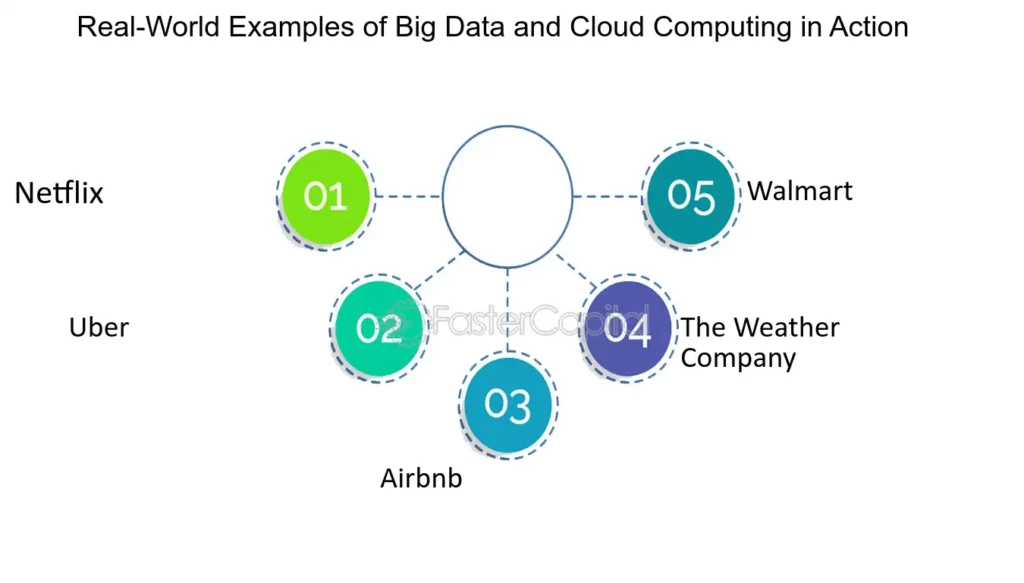Introduction to Cloud Computing in Financial Services

Cloud computing, a transformative technology that enables on-demand access to computing resources, plays a pivotal role in the financial services industry. At its core, cloud computing provides scalable and flexible IT resources over the internet, allowing businesses to store and process large volumes of data efficiently. Key concepts such as on-demand resource availability, scalability, and cost-efficiency are fundamental to understanding its significance.
In the context of financial services, these attributes are particularly valuable. Financial institutions require robust and dynamic IT infrastructures to handle extensive transactional data, ensure data security, and comply with stringent regulatory requirements. Cloud computing addresses these needs by offering a flexible and scalable solution that can adapt to fluctuating business demands and support rapid innovation.
One of the primary advantages of cloud computing in this sector is cost-efficiency. Traditional on-premises IT infrastructure requires substantial capital investment and ongoing maintenance costs. In contrast, cloud services operate on a pay-as-you-go model, enabling financial institutions to optimize their IT expenditures and allocate resources more effectively. This financial agility is crucial in a highly competitive market where operational efficiency can significantly impact profitability.
Data security and regulatory compliance are paramount concerns for financial services providers. Cloud computing platforms are designed with advanced security features, including encryption, identity management, and access controls, to protect sensitive financial data. Additionally, leading cloud service providers comply with industry-specific regulations, such as the General Data Protection Regulation (GDPR) and the Payment Card Industry Data Security Standard (PCI DSS), ensuring that financial institutions meet their compliance obligations.
The need for rapid innovation and agility is another driving force behind the adoption of cloud computing in financial services. With the cloud, financial institutions can quickly develop and deploy new applications, respond to market changes, and deliver enhanced customer experiences. The ability to experiment and innovate without the constraints of traditional IT infrastructure fosters a more dynamic and responsive business environment.
In conclusion, the integration of cloud computing into the financial services industry is not merely a trend but a critical advancement that addresses core operational and strategic needs. As we delve deeper into the benefits, challenges, and best practices, the importance of cloud computing in shaping the future of financial services will become increasingly evident.
Key Benefits of Cloud Computing for Financial Services
Cloud computing presents a multitude of advantages for financial services organizations, fundamentally transforming their operational landscape. One of the most significant benefits is the cost savings achieved through reduced infrastructure costs. By leveraging cloud solutions, firms can avoid the substantial capital expenditures associated with maintaining physical data centers. Instead, they can opt for a pay-as-you-go model, ensuring that they only pay for the resources they actually use, thereby enhancing overall financial efficiency.
In addition to cost savings, cloud computing significantly boosts operational efficiency. The automation of routine tasks and streamlined processes facilitated by cloud technology allows financial institutions to allocate their resources more effectively, focusing on core business activities. Enhanced scalability is another key benefit, enabling firms to handle varying workloads seamlessly. During peak periods, such as tax season or market volatility, cloud infrastructure can dynamically adjust to accommodate increased demand, ensuring uninterrupted service delivery.
Cloud-enabled tools also foster improved collaboration and innovation within the financial sector. With cloud-based platforms, teams can access and share data in real-time, regardless of geographical location. This fosters a more cohesive and agile working environment, driving innovation and enabling faster decision-making processes. Furthermore, cloud solutions integrate advanced analytics and artificial intelligence, providing insights that can lead to innovative financial products and services.
Security is paramount in the financial services industry, and cloud providers offer robust security measures that meet stringent regulatory requirements. Advanced encryption techniques ensure that sensitive financial data is protected both in transit and at rest. Additionally, cloud providers implement comprehensive compliance frameworks, regularly updating them to adhere to evolving regulations. This ensures that financial institutions can maintain regulatory compliance without the burden of managing complex security protocols in-house.
In essence, the adoption of cloud computing in financial services provides a strategic advantage, offering cost savings, enhanced operational efficiency, scalability, improved collaboration, and robust security. These benefits collectively empower financial institutions to navigate the dynamic market landscape with greater agility and innovation.
Challenges and Risks of Adopting Cloud Computing in Financial Services
Transitioning financial services to cloud computing presents a myriad of challenges and risks that institutions must meticulously manage. One of the foremost concerns is data privacy. Financial institutions handle sensitive information, necessitating stringent measures to ensure data security and confidentiality. The shift to cloud computing can expose this data to potential breaches if not properly safeguarded, making robust encryption and access control mechanisms indispensable.
Another significant hurdle is the complexity of regulatory compliance. Financial services operate under a dense web of regulations that vary by region and jurisdiction. Cloud service providers must align with these regulations to avoid legal repercussions. Ensuring that cloud solutions meet compliance standards such as GDPR, HIPAA, and PCI-DSS is critical, and continuous monitoring is required to maintain compliance as regulations evolve.
The potential for increased cyber threats is a pressing issue in the cloud environment. Cybersecurity threats, including malware, ransomware, and phishing attacks, are ever-evolving and can target cloud infrastructures. Financial institutions must implement multi-layered security strategies, including advanced threat detection systems, regular security audits, and employee training programs to mitigate these risks.
Vendor reliability is another crucial factor. Financial institutions depend heavily on the uptime and performance of cloud service providers. Any disruption in service can have severe operational and financial repercussions. Thus, evaluating the reliability and track record of potential vendors is essential. Additionally, the risk of vendor lock-in, where a financial institution becomes overly dependent on a single cloud provider, can limit flexibility and increase costs. To mitigate this, institutions should consider multi-cloud strategies and ensure data portability.
Lastly, a robust disaster recovery plan is vital. Cloud computing does not eliminate the need for disaster recovery; instead, it necessitates a more comprehensive strategy. Financial institutions should ensure that their cloud providers offer strong disaster recovery capabilities, including data backup, redundancy, and rapid recovery options.
Mitigation strategies for these risks include conducting thorough risk assessments, establishing clear governance frameworks, and fostering strong partnerships with cloud providers. By addressing these challenges proactively, financial institutions can confidently harness the benefits of cloud computing while safeguarding their operations and customer data.
Best Practices for Implementing Cloud Solutions in Financial Services
Implementing cloud solutions in financial services requires a strategic approach to ensure security, compliance, and operational efficiency. A critical first step is conducting thorough due diligence when selecting a cloud provider. Financial services organizations must evaluate potential providers’ security measures, including data encryption, access controls, and incident response protocols. Additionally, it is paramount to ensure that the chosen provider complies with industry-specific regulations such as GDPR, PCI-DSS, and SOX.
Developing a well-defined cloud strategy that aligns with the organization’s goals and regulatory requirements is essential. This strategy should outline the objectives of cloud adoption, the types of services to be migrated, and the timeline for implementation. It should also consider the regulatory landscape to ensure that all compliance obligations are met. This alignment helps in setting clear expectations and provides a roadmap for successful cloud integration.
A comprehensive data management plan is another crucial element. This plan should address data classification, data residency requirements, and disaster recovery protocols. It is important to establish policies for data storage, archiving, and retrieval to maintain data integrity and availability. Regular audits and assessments should be conducted to ensure ongoing compliance and to identify potential vulnerabilities.
Training staff for the transition to cloud computing is vital. Employees must be educated on new processes, tools, and security practices to minimize risks associated with human error. Providing continuous learning opportunities can help in keeping the workforce adept with evolving cloud technologies and security practices.
Ongoing monitoring and optimization of cloud resources is necessary to achieve maximum efficiency and cost-effectiveness. Implementing automated monitoring tools can help in tracking resource usage, identifying inefficiencies, and optimizing performance. Regular reviews and updates of the cloud strategy and data management plan will help in adapting to changing business needs and technological advancements.
Collaboration between IT and compliance teams is essential for a smooth and secure implementation process. These teams should work together to ensure that all security and compliance requirements are integrated into the cloud strategy. Regular communication and joint decision-making can help in addressing any issues promptly and effectively.

